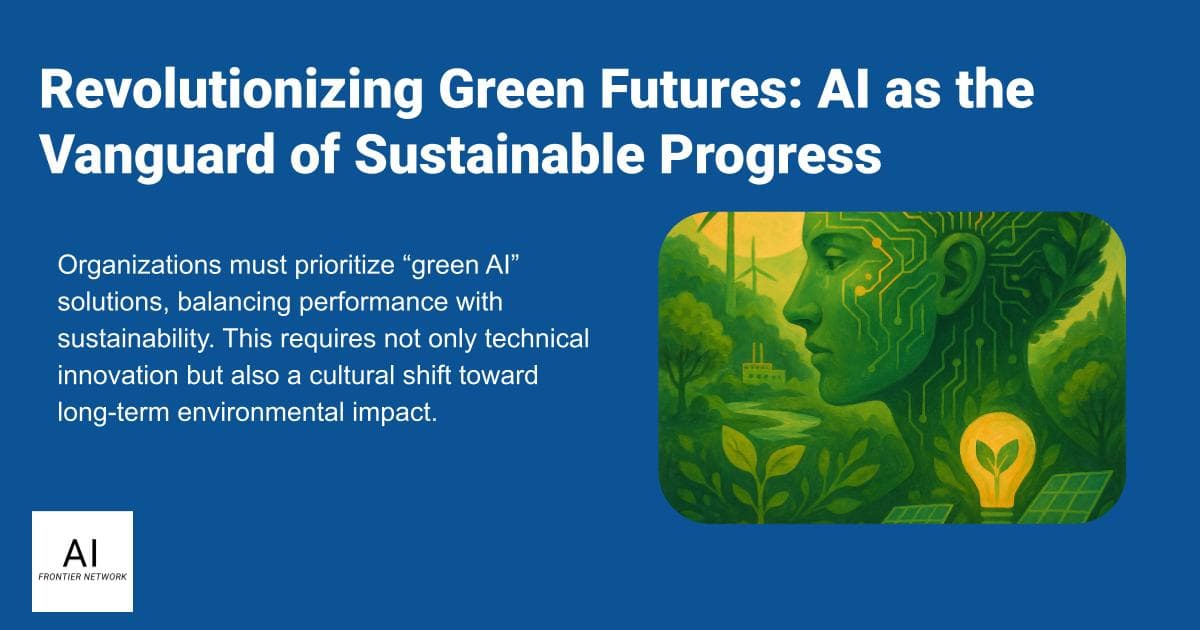The integration of artificial intelligence (AI) into sustainability efforts marks a pivotal shift in how organizations address environmental challenges. Far from being a mere tool for optimization, AI holds the potential to redefine systems, drive measurable progress, and confront the paradoxes of its own environmental footprint. Drawing on insights from industry leaders, this article explores how AI can bridge the gap between sustainability ambitions and tangible outcomes, while navigating its risks and scaling its impact. Their collective wisdom underscores a critical truth: AI’s role in sustainability lies not in incremental tweaks but in bold, systemic transformation.
From Goals to Measurable Progress
AI’s strength lies in its ability to transform abstract sustainability goals into quantifiable results across energy, emissions, and supply chains. Advanced analytics and machine learning enable organizations to optimize operations with precision. For instance, smart grids and AI-enabled building systems automatically adjust power usage based on demand, significantly reducing waste, as noted by Balakrishna Sudabathula. Similarly, Deepa Pahuja highlights how AI, combined with generative AI and agentic workflows, leverages IoT and imagery data to enhance energy systems and emissions tracking, driving data-driven insights in the energy sector.
Beyond optimization, AI connects disparate data points to provide a holistic view of sustainability efforts. Abhishek Agrawal emphasizes that AI’s ability to integrate data across energy, supply chains, and environmental impact allows organizations to comprehend complex systems comprehensively. This connectivity is critical for predictive analytics, anomaly detection, and scenario modeling, as Srinivas Chippagiri points out, enabling companies to track progress in real time. Rajesh Sura cites practical examples, such as Google’s use of AI to cut data center cooling energy by 40% and AWS’s collaboration with The Nature Conservancy to monitor deforestation, demonstrating AI’s capacity to deliver measurable outcomes.
The Paradox of AI’s Environmental Footprint
While AI drives sustainability, its own energy demands present a paradox. Training and deploying advanced models consume substantial power, contributing to carbon emissions and straining infrastructure, as Devendra Singh Parmar warns. Hina Gandhi echoes this concern, noting that data centers powering AI agents in the energy sector exacerbate greenhouse gas emissions. To address this, organizations must prioritize energy-efficient hardware and software optimization, alongside broader industry initiatives to promote responsible AI development.
This paradox extends to AI’s potential to entrench unsustainable systems. Ram Kumar N. recounts a pivotal moment in a sustainability review where the question of optimizing an obsolete supply chain exposed the limits of incremental change. Similarly, Nivedan S and Rahul Bhatia caution that AI could enhance the efficiency of fossil fuel-based or overconsumption-driven systems, delaying the transition to sustainable alternatives. Mohammad Syed reinforces this, warning that making harmful practices cost-effective risks prolonging their use. The solution lies in aligning AI with sustainability from the outset, ensuring it reimagines rather than reinforces broken systems.
Scaling Impact Through Innovation
AI’s transformative potential is already evident in applications that enhance environmental monitoring and climate resilience. Naomi Latini Wolfe highlights how developers at GDG Brunswick use Vertex AI to optimize coastal data models, reducing energy use by approximately 20% in marsh preservation projects. She also notes the use of satellite AI for methane tracking and flood prediction, strengthening coastal resilience. Balakrishna Sudabathula and Rajesh Sura point to AI’s role in detecting illegal deforestation and predicting wildfires, showcasing its capacity to address urgent climate challenges.
Innovative applications extend to emerging energy solutions. Preetham Kaukuntla observes that AI’s energy demands are spurring investment in small modular nuclear reactors (SMRs), with AI de-risking their deployment through real-time emissions modeling and predictive maintenance. Nikhil Kassetty envisions AI agents that autonomously renegotiate supplier contracts to prioritize green energy or optimize financial flows toward low-carbon initiatives, pushing sustainability beyond measurement to action. These examples illustrate AI’s ability to scale impact when applied thoughtfully.
Responsible AI: Balancing Ethics and Ecology
Responsible AI development is essential to align with environmental, social, and governance (ESG) principles. Devendra Singh Parmar stresses that sustainable AI requires optimizing algorithms for efficiency and integrating environmental impact assessments into the AI lifecycle. Naomi Latini Wolfe advocates for green energy and design to ensure access to everyone. Rajarshi T. emphasizes building transparency, accountability, and efficiency into every layer of AI systems, from data sourcing to deployment, to deliver long-term environmental value.
Ethical considerations are equally critical. Deepa Pahuja underscores the importance of mitigating risks such as energy consumption and ethical concerns through responsible practices. Rahul Bhatia, drawing from automotive industry experience, advocates for clear, energy-efficient, and expert-driven AI models to create smarter, greener systems. Hina Gandhi calls for industry-wide best practices to balance innovation with sustainability, ensuring AI serves as a regenerative force rather than a resource-intensive one.
A Call for Systemic Transformation
The insights of these leaders converge on a shared vision: AI must do more than optimize existing systems; it must catalyze systemic transformation. Ram Kumar N.’s reflection on AI as a mirror reveals its power to expose inefficiencies and unsustainable practices, urging organizations to rethink their foundations. Nikhil Kassetty’s vision of AI as a “digital ally” for sustainability, acting autonomously with accountability, points to a future where technology drives purposeful change.
To realize this vision, organizations must prioritize “green AI” solutions, balancing performance with sustainability. This requires not only technical innovation but also a cultural shift toward long-term environmental impact. By integrating AI with renewable energy, inclusive design, and transparent governance, companies can ensure that progress does not come at the Earth’s expense.















